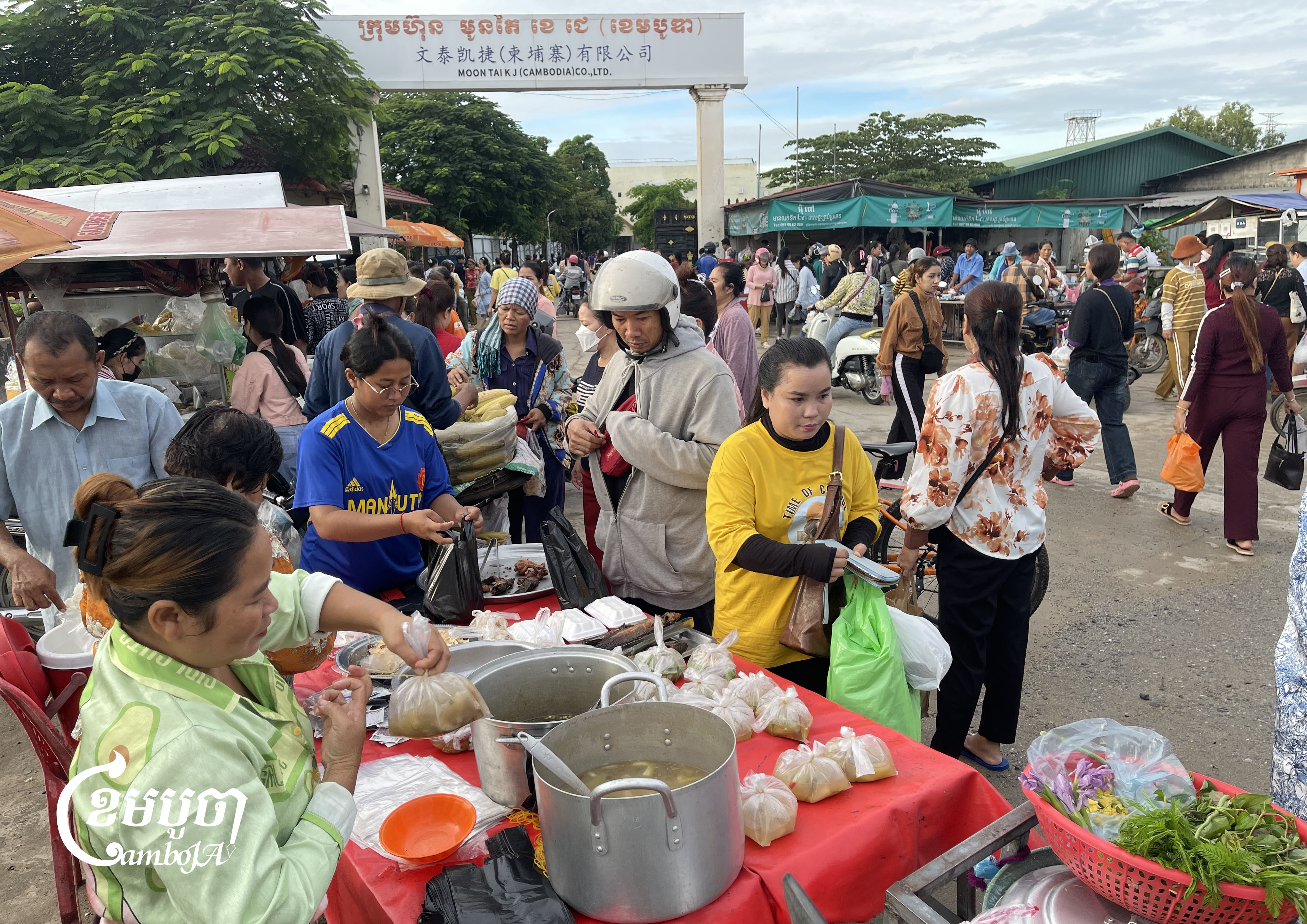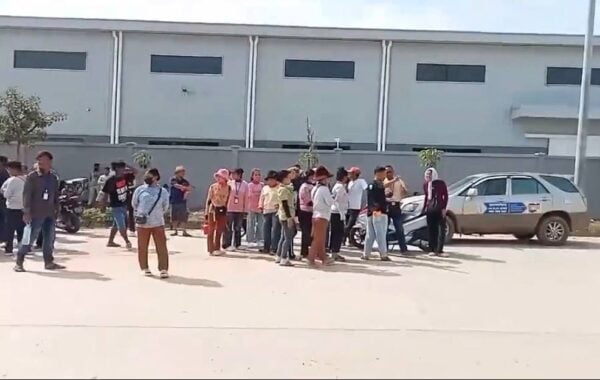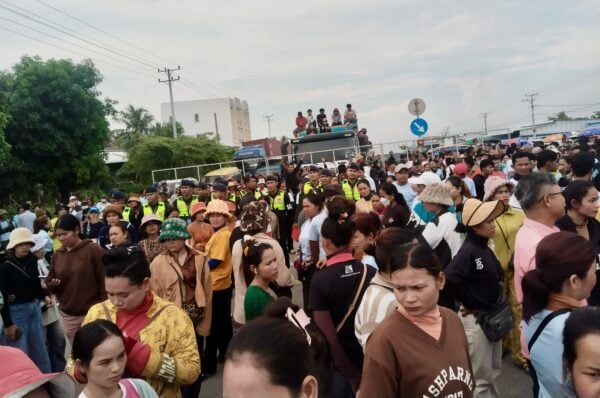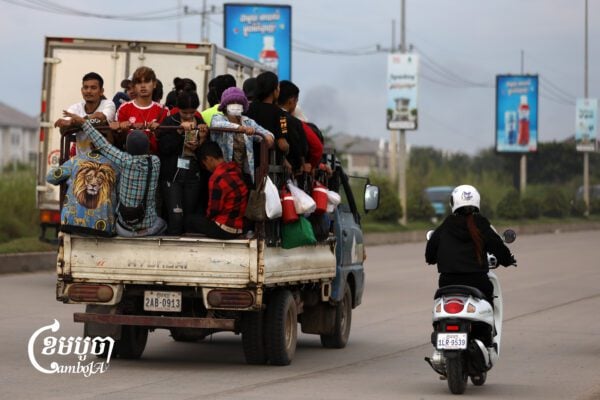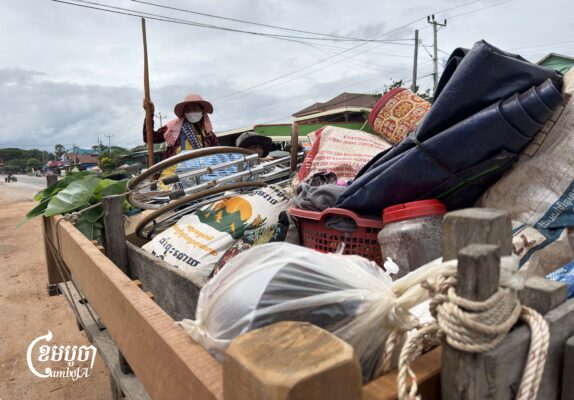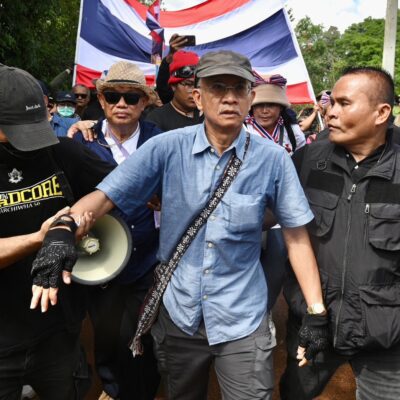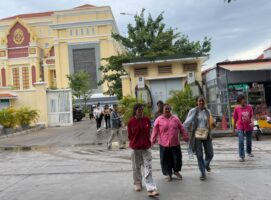Garment, footwear and travel goods (GFT) workers expressed frustration Wednesday after Prime Minister Hun Manet announced the minimum wage will rise just $2 next year, far short of the increase independent unions say is needed to meet the “real cost of survival.”
Hun Manet posted on Facebook that the floor wage for 2026 will be $210, slightly up from this year’s $208. The announcement follows weeks of talks by the Minimum Wage Council, made up of union and employer representatives and mediated by the Labor Ministry, after unions on the council dropped their demands last week.
Workers have criticized employer insistence on keeping the 2026 minimum at $208 despite rising inflation, warning that they were weakly represented in the negotiations. The modest hike is even smaller than last year.
Channy, a garment worker at YIDA factory in Kandal province who asked to withhold her full name for fear of employer retaliation, called the wage talks and $2 increase “disrespectful” and “a lack of appreciation for the labor force.”
“With hardly any increase, I see this as reckless behavior by employers. They earn huge profits exporting their products, yet we still can’t get a fair wage,” she said.
Pech Phany, a garment worker in Kampong Chnang province, expressed similar frustration. “This keeps us in hardship. The new salary still isn’t enough for daily expenses,” she said.
Workers spend an average of $408 a month on food and other essentials, almost double their typical income of $250 including overtime and small benefits, according to the Asia Floor Wage Alliance’s 2024 survey.
The disparities between living cost and wages have driven around 76% of GTF workers into debt just to survive, according to the survey.
Many independent GFT unions had sought a 2026 minimum wage of $232 a month, which they and rights groups say is the minimum adjustment needed, even though it still falls short of the true cost of living.
In a Wednesday statement, the Labor Ministry praised the small wage increase, saying that “despite global economic uncertainty” and the fact that “other countries in the region are not raising wages,” the Cambodian government acted “whether modest or significant, to help ease workers’ burdens.”
During final wage council talks, employers cited economic uncertainty from the recent border clashes with Thailand, the mass return of migrant workers, and new U.S. tariffs as reasons they could not agree to a wage increase.
Cambodia’s levy on exports to the U.S. market was cut to 19% in August, after previously facing tariffs of 49% and later 36%, which fueled uncertainty until the reduction brought rates in line with regional competitors.
Nang Sothy, a garment manufacturer representative, pointed to fringe benefits as justification for keeping wages flat, saying that while the amount is near the same, workers will receive additional benefits like housing and travel expenses, bringing total compensation to $225 to $235 per month.
Ath Thorn, vice president of the Coalition of Cambodian Apparels Workers’ Democratic Union, said the $2 increase is insufficient given inflation above 2% and weak union representation during negotiations. “This shows the weakness of unions representing workers, so the wage increase basically comes from the government,” he said.
Labor Ministry spokesperson Sun Mesa did not immediately respond to a request for comment.
Minimum wage rules apply only to Cambodia’s GFT sector, which employs nearly one million people – mostly women – and forms the backbone of the country’s formal workforce, while more than 88% of workers remain in informal jobs.
(Additional reporting by Lon Saoda )

